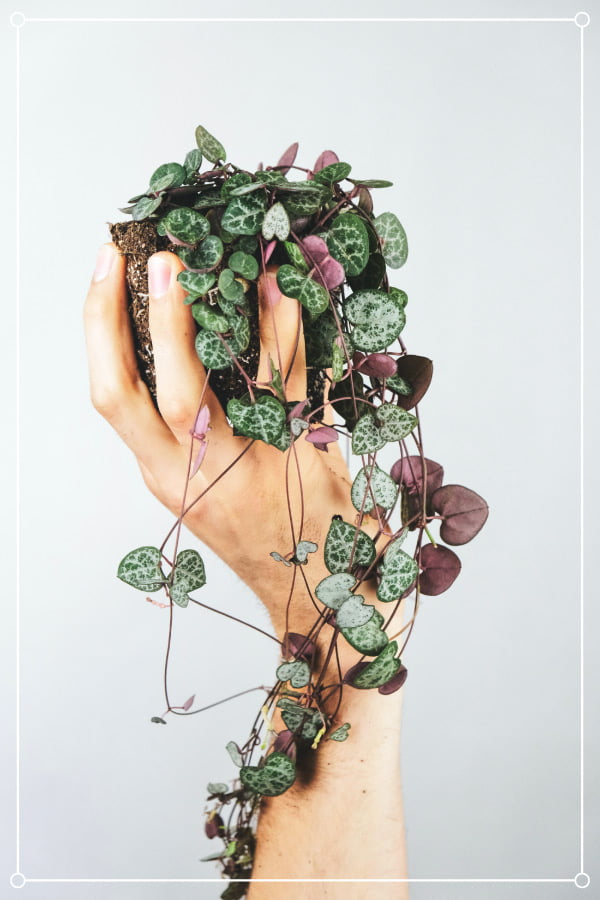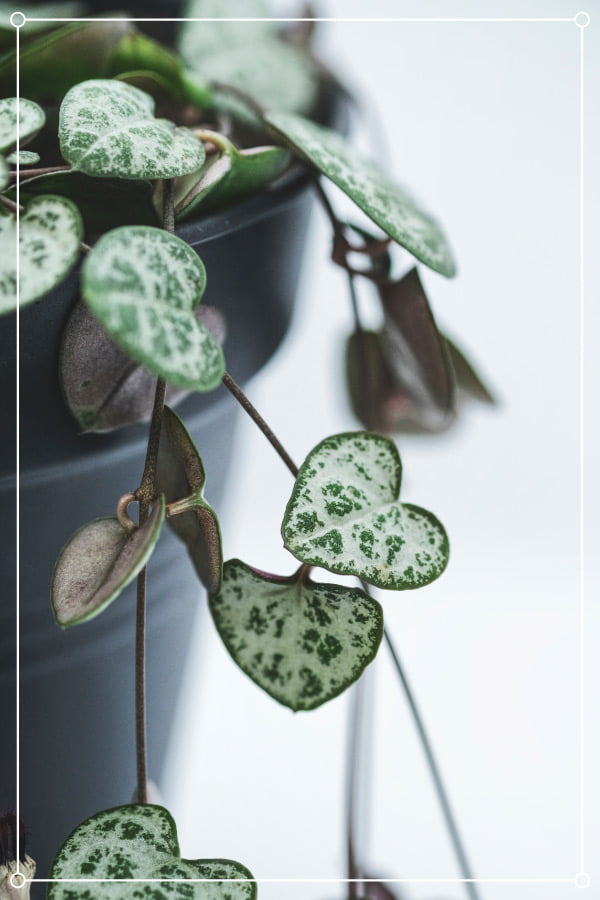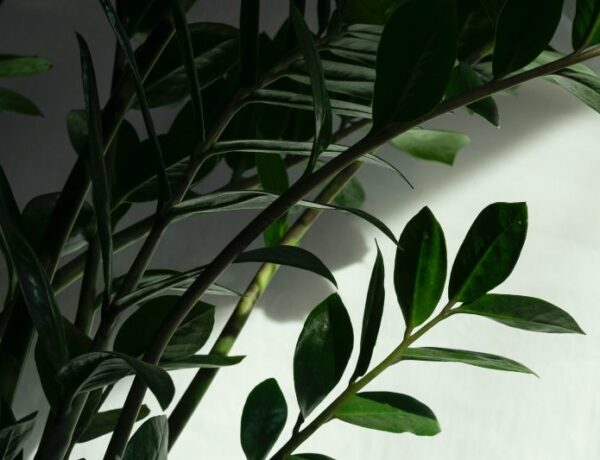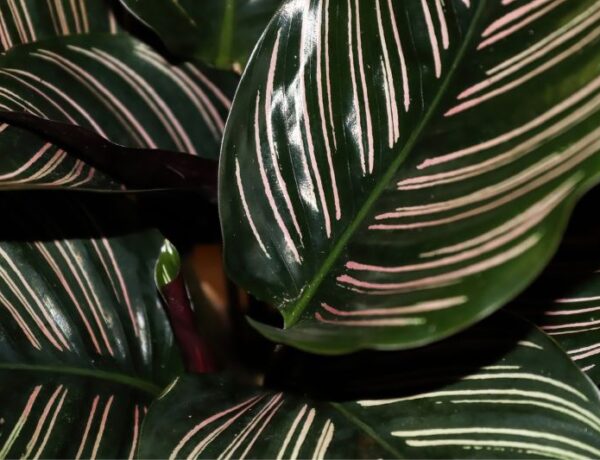Get ready to fall in love with the charming String of Hearts (Ceropegia woodii). This trailing succulent, also known as the Rosary Vine or Chain of Hearts, boasts a cascade of heart-shaped leaves that create a romantic atmosphere in any living space.
At first glance, this houseplant may seem fragile and finicky, but in reality, it is a resilient and easy-to-care-for. In fact, it will continue to thrive even if you happen to forget a watering session now and then.
In this article, we will guide you through your String of Hearts’ growing requirements. So, whether you’re a first-time plant parent or a seasoned indoor gardener, this guide will equip you with the knowledge to keep your plant healthy and thriving.
Table of Contents
1. Taxonomy & General Information
| Scientific name: | Ceropegia Woodii |
| Common names: | String of Hearts, Chain of Hearts, Collar of Hearts, Hearts-on-a-string, Rosary Vine, Sweetheart Vine |
| Native to: | South Africa |
| Toxicity: | Non-toxic to dogs, cats, or humans |
| Category: | Trailing succulent |
| Growth Rate: | Moderate to fast, depending on conditions |
| Dormancy Period: | Winter, reduced watering and no fertilization |
| Length: | 6 – 13 feet (2 – 4 meters) |


2. String of Hearts Care & Growing Requirements
This little plant may be low-maintenance, but it’s not a fan of the steamy shower vibes, so it’s definitely not a houseplant fit for you bathroom. However, if you’re looking for an easy-to-care-for plant, the String of Hearts is your guy (or gal, we don’t judge).
» Watering
As a succulent, the String of Hearts is drought-tolerant and doesn’t require frequent watering. By allowing the soil to dry out at least 2/3 of the way down the pot before watering it thoroughly, you’ll prevent overwatering and promote healthy root growth.
In general, you should water it every 2-3 weeks in the growing season (spring and summer) and reduce watering to once a month during the dormant period (fall and winter).
» Lighting
The String of Hearts prefers bright, indirect sunlight. Place it near a well-lit window, but avoid direct sunlight as it can cause the leaves to scorch. However, a small amount of direct sunlight can be beneficial for promoting healthy leaves and flowers.
To determine if your succulent is receiving adequate light, you can monitor the color and spacing of the leaves. If they are less vibrant and the spaces between them are larger than usual, your String of Hearts may need more light. You can either move it to another spot or supplement with artificial lighting.
» Soil
Well-draining soil is essential for the String of Hearts. Use a high-quality succulent or cactus mix, or create your own blend with equal parts of potting soil, perlite, and coarse sand. This mix will ensure that water drains efficiently, preventing the roots from sitting in wet soil for extended periods.
» Temperature
This plant prefers temperatures between 65°F (18°C) and 80°F (27°C). It can tolerate short periods of cooler temperatures down to 55°F (13°C), but prolonged exposure to low temperatures may lead to stress and damage.
Keep your String of Hearts away from drafts, heaters, and air conditioners to maintain a consistent temperature.
» Humidity
The String of Hearts can adapt to various humidity levels, but it performs best in moderate to low humidity environments. If you live in a dry area, you can maintain adequate humidity by placing the plant on a tray filled with pebbles and water or using a humidifier.
Misting is not recommended, as it can lead to fungal issues.
» Fertilization
Fertilize your String of Hearts sparingly during the growing season, using a balanced, water-soluble fertilizer diluted to half strength.
Apply the fertilizer once a month from spring to summer, but avoid fertilizing during the dormant period, as the plant’s nutrient uptake slows down significantly.
3. String of Hearts Maintenance & Propagation
If you’re also looking for ways to keep your String of Hearts (Ceropegia woodii) looking its best and even expanding your collection, we’ve got you covered!
» Repotting
The String of Hearts has a shallow root system, which means it doesn’t require frequent repotting. Generally speaking, you should repot it every 2-3 years or when you notice that the roots are becoming pot-bound.
Here’s how to repot your String of Hearts:
- Choose a new pot that is one size larger than the current one and has drainage holes to prevent waterlogging.
- Remove the plant from its current pot by gently squeezing the sides to loosen the root ball.
- Inspect the roots for any signs of rot or damage, and trim them as needed.
- Fill the new pot with a well-draining succulent or cactus mix, or create your own blend with equal parts of potting soil, perlite, and coarse sand.
- Place the plant in the new pot and gently backfill with the soil mix, ensuring that the roots are well covered.
- Water the plant thoroughly after repotting to help it settle in.
» Pruning
By pruning your String of Hearts you can maintain its shape, encourage bushier growth, and remove any dead or damaged foliage.
Using clean, sharp scissors or pruning shears, trim the vines back to the desired length. It’s best to prune during the growing season (spring or early summer) to promote new growth. Remove any yellow, brown, or damaged leaves as they can drain the plant’s energy.
Also, if you notice any signs of pests or diseases, treat the plant accordingly before pruning to prevent further issues.
» Propagation
Propagating String of Hearts is a rewarding way to expand your collection or, of course, share this charming trailing houseplant with your friends and family.
The easiest method to propagate is through stem cuttings. To do so, you can follow these steps:
- Choose a healthy, mature vine from your String of Hearts and use clean, sharp scissors or pruning shears to cut a 4-6 inch (10-15 cm) long section. Make sure the cutting has at least 2-3 pairs of leaves.
- Remove the bottom leaves, leaving about an inch (2.5 cm) of bare stem at the bottom of the cutting.
- Allow the cut end to dry and callous for 1-2 days to prevent rot.
- Place the cutting in a small container filled with well-draining succulent or cactus mix, ensuring the bare stem is in contact with the soil.
- Keep the soil slightly moist and maintain bright, indirect light. In 2-4 weeks, the cutting should develop roots, and you’ll notice new growth.
- Once the cutting has established a robust root system, you can transplant it into a new pot and care for it as you would a mature plant.
4. Common issues while growing a Ceropegia Woodii
Even if String of Hearts is a low-maintenance houseplant, you may still encounter a few challenges while taking care of it.
» Yellowing leaves
Overwatering is the most common cause of yellowing leaves in String of Hearts. Excess water can lead to root rot, which in turn causes the leaves to turn yellow and eventually drop off.
To fix this, make sure to allow the soil to dry out between waterings or reduce watering frequency. If the problem persists, consider repotting the plant in fresh, well-draining soil and trimming any damaged roots.
» Shriveled leaves
Underwatering or too much heat can cause the leaves to shrivel and look wrinkly.
Increasing the watering frequency and avoiding prolonged periods of drought should improve your plant’s looks. If you live in a dry area, place the plant on a tray filled with pebbles and water or use a humidifier to maintain adequate humidity.
» Leggy Growth
Insufficient light can cause the String of Hearts to become leggy, with elongated stems and sparse foliage.
Fix this by moving the plant to a brighter location with indirect sunlight. However, if natural light is limited, you can supplement with a grow light to provide the necessary light levels for healthy growth.
5. Dealing with pests and diseases
Although String of Hearts (Ceropegia woodii) is relatively resistant to pests and diseases, it’s still recommended to keep a close eye on your plant to ensure its health. Some common pests that may affect your String of Hearts include mealybugs and spider mites, while root rot is a typical disease associated with this plant.
It’s also important to understand the differences between pests and diseases when caring for your String of Hearts. Pests are living organisms, such as insects or mites, that feed on your plants, causing damage and potentially transmitting diseases. Diseases, on the other hand, are caused by pathogens like fungi, bacteria, or viruses, which can lead to various symptoms, including leaf spots, wilting, or root decay. Both pests and diseases can harm your plant, but they require different prevention and treatment strategies.
Conclusion
It’s quite easy to grow a healthy String of Hearts indoors. If you’ve got the lighting and watering requirements right, the rest should be a piece of cake. If you’ve got any questions about your houseplant or require help, don’t hesitate to reach out to us!






No Comments